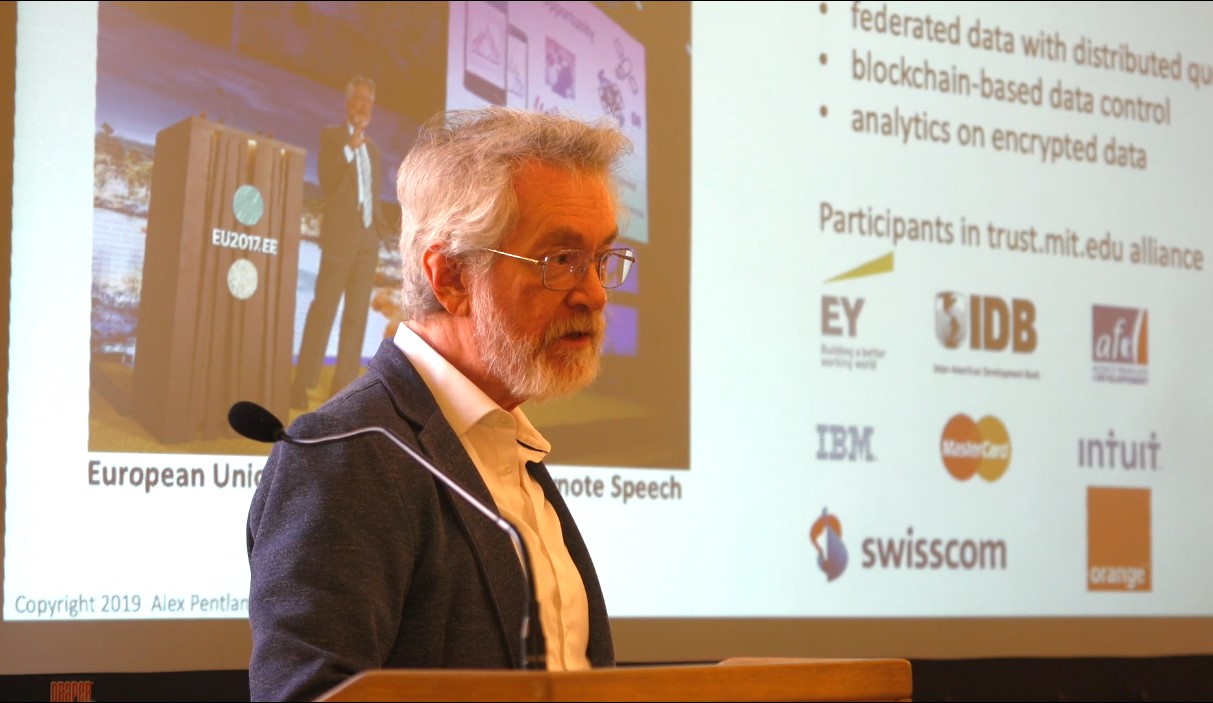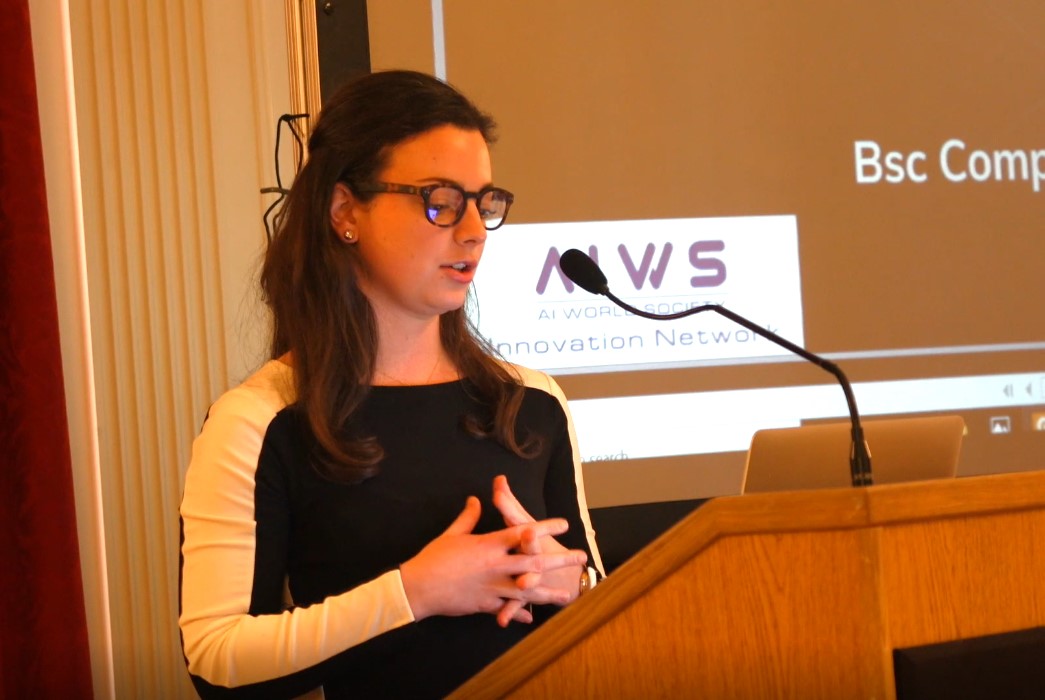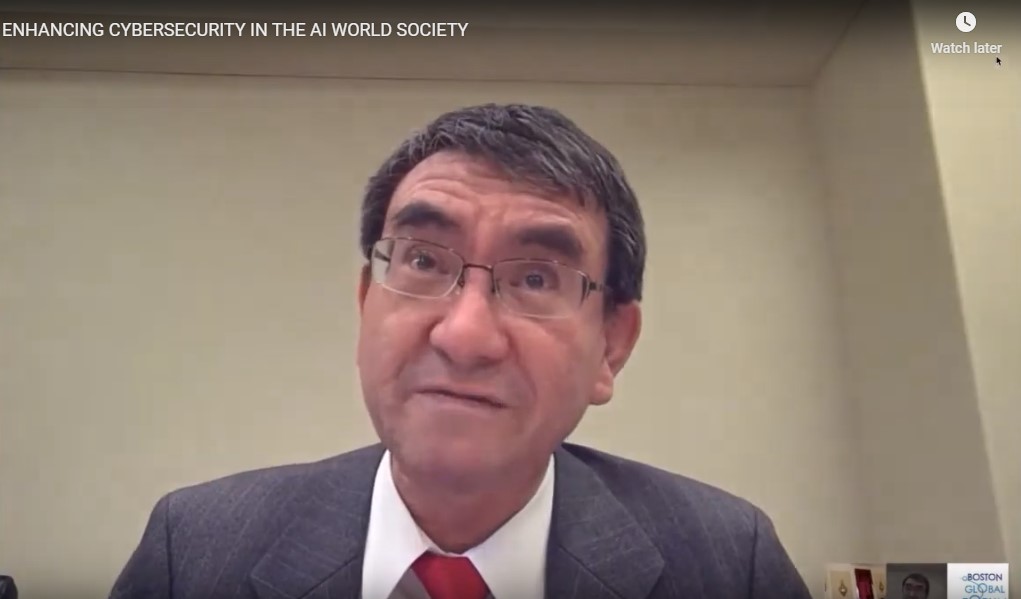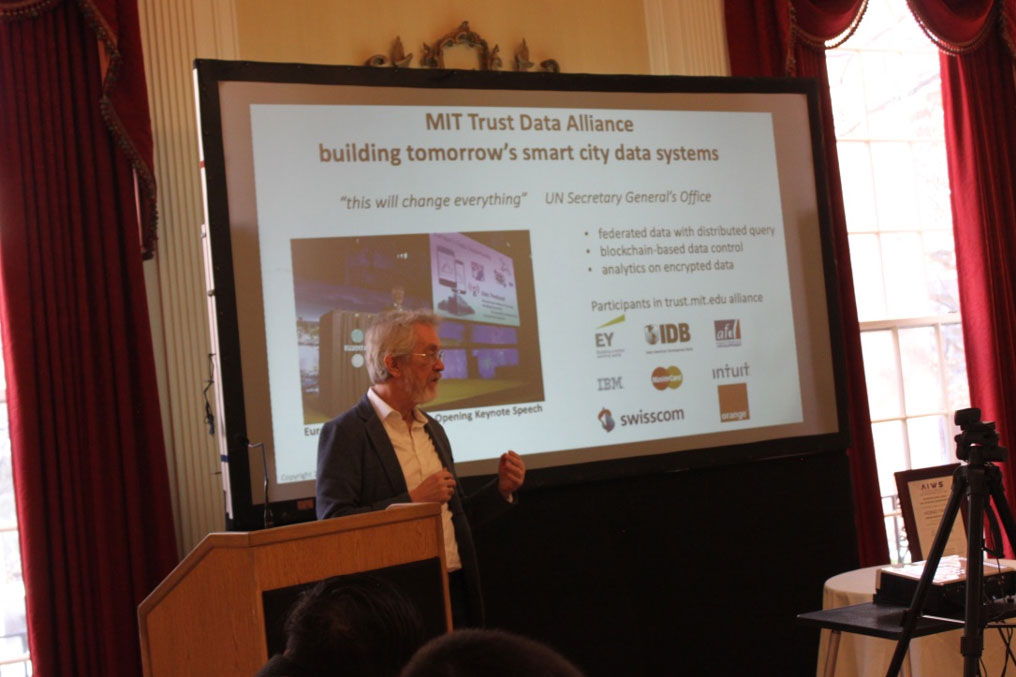
by Admin | Mar 25, 2020 | AIWS and the Age of Global Enlightenment
Alex Pentland, MIT, Co-founder of the AIWS Innovation Network (AIWS.net)
[email protected]
Summary: Digital identity that allows certification of the user’s health status, similar to today’s payment acceptance mechanism, can create safe working environments and consumer experiences (restaurants, hotels, meetings) while protecting personal privacy.
A New Economic Resource to help Restart the Economy
Soon we expect to have more than 30% unemployment, and repeated waves of infection for at least two years, preventing normal economic recovery. Finance, government, travel, hospitality, and manufacturing will be devastated, with widespread bankruptcies and business closings. We are going to have to restart the economy starting from a depression-level situation. But how?
One economically significant consequence of these waves of infection is creation a “safe worker” workforce. This workforce consists of people who have been infected and then recovered, so that they can be certified as less likely to become re-infected. This disease-resistant workforce will generally young, but also generally from the poorer communities that are being disproportionally affected.
Can we use these “safe workers” to help restart the economy? To make use of this resource we need to certify who is recovered (or, eventually, who is vaccinated). As testing become common, fast, and inexpensive we could also certify people who recently tested negative. All this also makes early detection of infection and contact tracing much, much easier, eventually preventing successive waves of infection.
A crude, brute-force version of this idea has been behind the most successful efforts at suppressing the disease (Taiwan, Korea, Singapore). They relied on “big brother” use of personal data, and authoritarian enforcement of quarantine and isolation. As the disease and recovery progresses, these countries now have a certified group of safe workers and can being restarting the economy.
In democratic countries the use of “big brother” data methods are feared because of the danger that it will continued to be used by government after the immediate emergency. Consequently, sophisticated institutions are turning to more sophisticated methods of computing that preserve privacy and data ownership[i]. Some countries and companies already use these sorts of methods, and the EU government has committed to migrate to such technology.
A Plan: Start By Making Safety Easy
Imagine a society where banks serve as repositories for citizens’ health data, much as they already do for their financial data. This personal form the basis of each citizen’s digital identity very much like bank data currently provides citizens with their financial identity. In this society a citizen can certify their health status to a participating merchant or employer in the same way their credit card charges are certified. They can also see where it is probably safe to go, and where the risk is higher, and even get immediate notice if they have been exposed to infection, all without endangering their personal privacy.
Moreover, with such certification available government could offer financial incentives for employment of safe workers, and to motivate safe workers to take jobs that require customer contact. They could also provide incentives for uninfected workers to take jobs that have less exposure to infection, and help make sure they stay safe. Similarly, merchants could (for instance) certify that their business has only safe employees in customer-facing positions.
This health certification also allows for extremely fast and accurate infection contact tracing and individual-level infection avoidance information without threatening personal privacy. Individuals with health certification can have their mobile phone automatically check the status of people around them without sending personal data off of their phone or identifying the people around them. This is accomplished by use of either sophisticated methods such as Secure Multiparty Computation (already nearly universally deployed for some types of updates on mobile phones) or simple “risk maps” aggregated from anonymized data and appropriately sanitized using differential privacy methods (such as employed by the U.S. Census Office).
The major hurdle to implement this vision is sharing of health data certifications to citizens, which are then their bank. Mobile certification is similar to current digital payments, digital identity infrastructure that is already being deployed by (for instance) MasterCard, and we at MIT are releasing a USA-wide “safe paths” and contact tracing facilities this week. This system helps people stay safe, and can help restart our economy in multiple ways. To help kick-start use of this process government or large employers can provide financial incentives to, for instance, visit newly open merchants, to employ “safe workers” in customer-facing positions, and for merchants to obtain “safe environment” certification.

[i][i][i] An illustrative example is our Open Algorithms platform and employing Secure Multi-Party Computation, which provably maintains privacy and audit-ability of fairness and fraud.
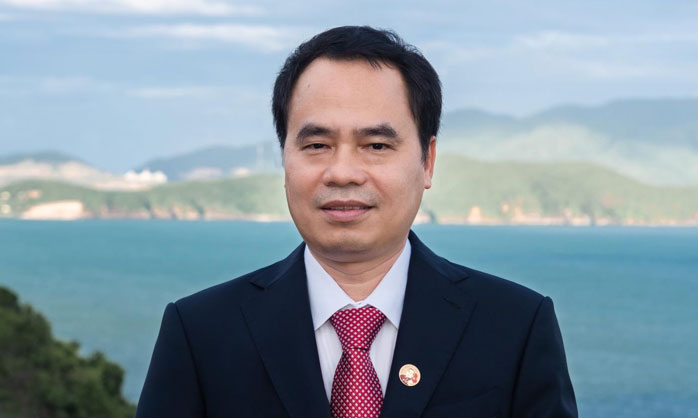
by Admin | Mar 7, 2020 | AIWS and the Age of Global Enlightenment
Message from Mr. Nguyen Van Tuong, Founder and Chairman of Tram Huong Khanh Hoa Company
Nha Trang, February 22, 2020
Trầm Hương or Agarwood in English, is the most precious product from Vietnamese forests.
Since ancient times, it has been called the Wood of Gods and the Scent from Heaven. Only emperors, royalty, senior officials, and noble lords got access to agarwood.
This dark wood, considered a national treasure, is used to produce medicines, fragrances from its essential oil that are more valuable than pure gold, and jewelry
Agarwood harvested in Khanh Hoa, Vietnam is popular all over the world, and has been traded as the most expensive product from Vietnam to all corners of the world along the Incense Route and the Silk Road, by land and sea, connecting Vietnam to other nations, and becoming a symbol of peace and prosperity in a harmonious world.
The world’s religions use agarwood as offerings in solemn ceremonies. When burnt, it releases aromatic smoke that clears the mind, increases wisdom, and stimulates pure, righteous thoughts. Agarwood is also believed to have a special quality that connects us with our ancestors and our gods in heaven. The wood itself is an expression of the human desire to be protected and blessed with favorable weather for abundant harvests and a happy, prosperous life.
Nghệ thuật Thưởng Trầm Vietnam or Vietnam Agarwood Pleasure Art, has been appreciated as a quintessential artform for all mankind. It has been scientifically proven, as well, that agarwood releases a gaseous nutrient that helps regenerate the body, cure many diseases, and provide a miraculous source of spiritual energy.
Agarwood is a messenger of peace that supports both romantic feelings and intellectual, sacred, and noble emotions, thus directing the human soul to the True, the Good, and the Beautiful. The presence of Agarwood in our lives bring more empathy to our modern industrial society, which is making extensive use of artificial intelligence, thus making AI more humane and compassionate. In this regard, Tram Huong Khanh Hoa Company (ATC) is honored to join the World Leadership Alliance-Club de Madrid and the Boston Global Forum and to hold the Tram Huong Agarwood-offering Ceremony honoring the World Leader in the Artificial Intelligence World Society, the April 27 to 29, 2020 at Harvard University Policy Dialogue “Transatlantic Approaches on Digital Governance: A New Social Contract in Artificial Intelligence.”

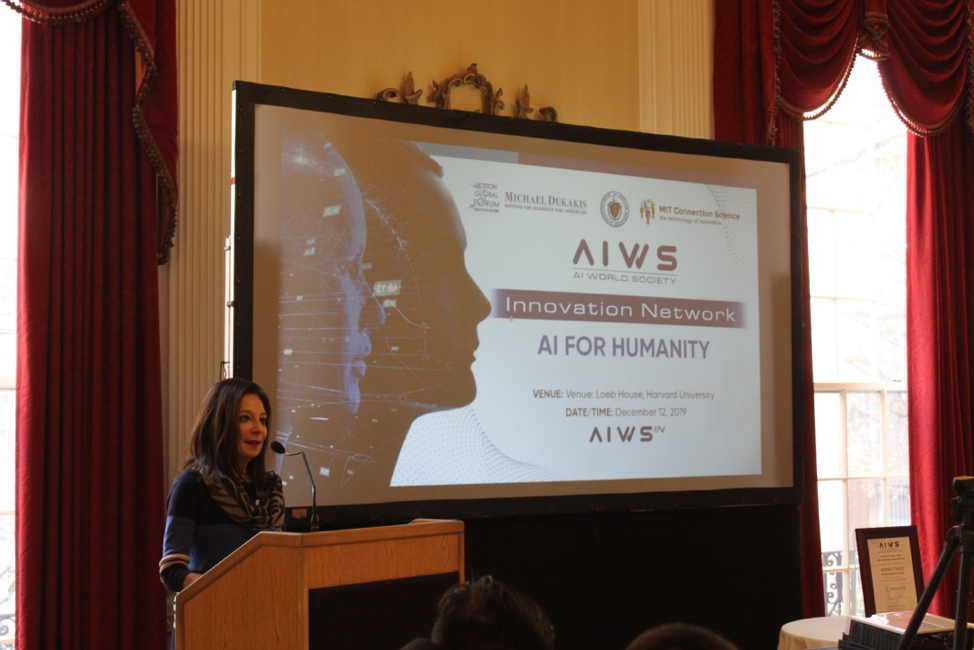
by Admin | Jan 27, 2020 | Shaping Futures
Preface
Advances in AI, Internet, social media, and threats to cybersecurity jointly shape a new worldwide ecosystem for which there is no precedent. At issue is building new dimensions, even principles, which would shape the future of international law. Toward this end, the Social Contract 2020 has been introduced, framed, and further refined in four contexts: (a) The Riga Conference, Oct 12, 2019, (b) “2019 Policy Dialogue on Artificial Intelligence” of World Leadership Alliance-Club de Madrid, Oct 21, 2019, (c) AI World Society – Summit 2020 at Loeb House, Harvard University, April 28, 2020, and (d) United Nations Charter Day, June 26, 2020.

Professor Nazli Choucri, MIT
Co-founder of the AIWS Innovation Network
I. INTRODUCTION – NEW GLOBAL ECOLOGY
The term “artificial intelligence” refers to the theory and development of computer systems able to perform tasks that normally require human intelligence, such as visual perception, speech recognition, decision-making, translation between languages, self-driving cars, and so forth. Almost everyone recognizes that advances in AI have already altered conventional ways of viewing the world around us. This is creating new realities for everyone – as well as new possibilities.
These advances are powerful in many ways. They have created a new global ecology; yet they remain opaque and must be better understood. We have created new tradeoffs that must be assessed. We must now focus on critical principles and essential supporting practices for the new and emerging Social Contract 2020.
We must now re-think and consolidate the best practices for human development, recognizing the power and the value of the individual and of society.
II. NEW REALITY – AND NEW UNKOWNS
Advances in AI are far more rapid that we appreciate. Fully understanding the scale of the AI domain remains elusive. We have seen a shift from executing instructions by humans to replicating humans, outperforming humans, and transcending humans.
We are at the beginning of a new era, a world of mind-machine convergence with biological drivers for both mind and machine. Also elusive is the management of embedded insecurities in applications of this new ubiquitous technology and the imperatives of safety and security.
When all is said done, AI remains: devoid of consciousness, empathy, and perhaps select other human features, such as ethics, so fundamental to humanity and the social order. Its current logic is situated at the frontiers of biological intelligence and machine intelligence. While it is generally anchored in past data, it has made possible whole new sources and forms of design space.
In sum: The world of AI today is framed by a set of unknowns — known unknowns and unknown unknowns — where technological innovation interacts with the potential for a total loss of human control.
III. INTERNATIONAL CONSENSUS
There is a clear awareness in the international community of the challenges and opportunities, as well as the problems and perils of AI, and many are seeking ways of managing their approach to AI. At least 20 countries have announced formal strategies to promote the use and development of AI. No two strategies are alike, however there are common themes even among countries who focus on different aspects of AI policy. The most common themes addressed pertain to:
- Scientific research,
- Talent development,
- Skills and education,
- Public and private sector adoption,
- Ethics and inclusion,
- Standards and regulations, and
- Data and digital infrastructure.
Concurrently, AI is becoming a focus for foreign policy and international cooperation – for both developed and developing states. There is a shared view that no country will be able to compete or meet the needs of its citizens without substantial AI capability.
More important, many countries are now involved in technology leapfrogging rather than in replicating known trajectories of the past century. It is no longer expected, nor is it necessary, to replicate the stages of economic development of the west —one phase at a time. Countries now frame their own priorities and strategies.
In sum, all countries are going through a common experience of adapting to and managing unknowns. This commonality of shared elements result in a welcoming international atmosphere for a Social Contract 2020. What is the Social Contract 2020?
IV. FOUNDATIONS and PRINCIPLES
There is a long tradition of consensus-based social order founded on cohesion and not use of force nor formal regulation or legislation. It is a necessary precursor for managing change and responding to societal needs.
The foundational questions are: what, why, why and how?
What?
A social contract is about supporting a course of action. It is inclusive and equitable. It focuses on the relationships among people, governments, and other key entities in society.
Why?
To articulate the concerns and find common convergences. And to frame ways of addressing and managing potential threats.
Who?
In today’s world, participants in the Social Contract 2020 involve:
- Individuals as citizens and members of a community
- Governments who execute citizen goals
- Corporate and private entities whose operations involve
Business rights and responsibilities
- Civil society that transcends the above
- Innovators of AI and related technologies, and
- Analysts of ethics and responsibility. None of the above can be “left out.”
Each of these constitutes a distinct center of power and influence.
How?
The starting point consists of three foundational principles for powerful international cooperation that provide solid anchors for the Social Contract 2020:
(1) Precautionary Principle for Innovations and Applications:
The precautionary principle is well established internationally. It does not impede innovation, but supports it. It does not push for regulation, but supports initiatives to explore the unknown with care and caution.
(2) Fairness and Justice for All
The second principle is already agreed upon in the international community as a powerful aspiration. It is the expectation of all entities – private and public — to treat, and be treated, with fairness and justice.
(3) Responsibility and accountability for policy and decision – private and public
The third principle recognizes the power of the new global ecology that will increasingly span all entities worldwide — private and public, developing and developed.
Jointly, these basic foundations – what, why, who and how – create powerful anchors for framing and implementing the Social Contract 2020.
V. SOCIAL CONTRACT 2020
All participants and centers of power and influence contribute to framing the legal order in the age of AI. And each has rights and responsibilities that must be articulated and respected. An initial framing is presented below:
(1) Individuals, Citizens, Groups:
Everyone is entitled to basic rights and dignity that are enhanced (?) by AI and the Internet Age and entail greater responsibility:
Data Rights and Responsibilities
Each individual has a right to privacy and is entitled to a device to access and control their own data. Individuals have a right to organize ways of managing their data, individually or collectively.
Education and Political Participation
Each individual has the Right to be involved directly and effectively in political decisions. Each has access to education/knowledge pertaining to the use and impact of AI.
Responsibility:
Each individual is prohibited from exercising adverse behaviors, such as hacking and disseminating disinformation.
(2) Governments:
Every government is expected to behave responsibly in the management of AI for governance and for interactions with individuals.
Governments Standards:
- Create incentives for citizens to use AI in ways that benefit society.
United Nations and International Organizations:
- Extend sphere to include AI and extend the upholding of international standards/norms/practices pertaining thereto.
- Create and manage a universal digital currency.
(3) Business Entities
Business operations and related rights come with accountability and responsibility – nationally and internationally.
- Respect independent audits for fairness, accountability, and cybersecurity.
- Respect common AI values, standards, norms, and data ownership rules, and expect penalties for noncompliance.
(4) Civil Society Organizations:
Rights and responsibilities of civil society organizations include monitoring governments and firms with respect to common values.
- Civil society organizations are responsible for compliance with common values/norms/standards/laws and expect penalties for noncompliance.
- Support and recognize exemplary citizen contributions in AI area.
(5) AI Assistants:
AI assistants provide an interface to facilitate compliance with established standards.
- Support AI users and assist them to serve the broad interests of society.
- Engage with other power centers for mutual support and supervision.
VI. PREFERENCES and PERFORMANCE
The Social Contract 2020 consists of general principles and directives for its implementation. Each country is different, as would be the approach to the implementation and adoption of Social Contract 2020. These preferences are often in the nature of tradeoffs at the intersection of AI and society. These are simply adjustment mechanisms to facilitate implementation of Social Contract 2020. For example:
- Performance & explicability
- Ethics & efficiency
- Growth & sustainability
- Convenience vs. safety
- Power & accountability
- Regulation & innovation
- Security vs. stability
Social Contract 2020 helps steer societies to transcend current practices and forms of e-government by enabling and providing applications of AI to assist decision making for all critical functions – notably the provision of public services, performance of civic functions, and evaluation of public officials – supported by a Center for National Decision Making and Data (NDMD).
AI supported public services span major critical functions to enable automated public services assisted by AI, notably:
- Health care and public health:
Build AI hospitals for remote, rural, and mountainous areas.
Build AI schools for remote, rural, and mountainous areas.
Build AI law, legal services.
AI public transportation information and support system.
- Public services for tourism:
AI public services for tourism.
- Public services to support labors:
AI labor, job guidance system.






